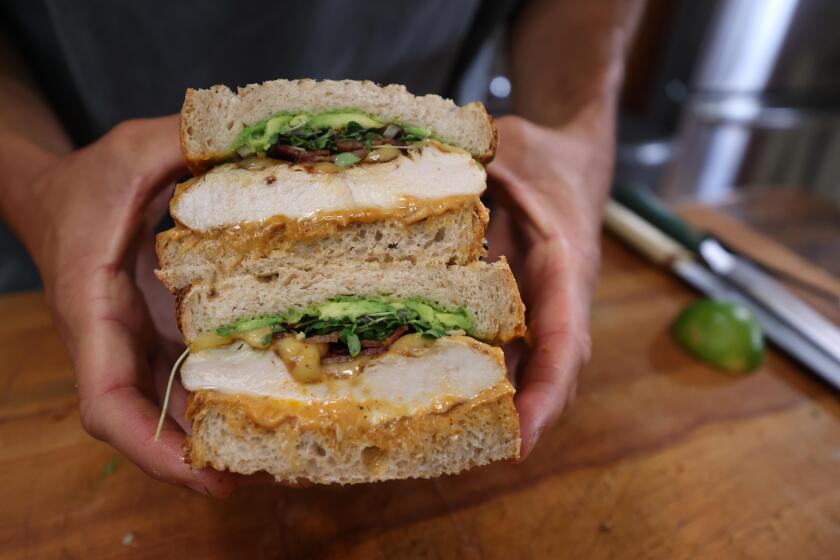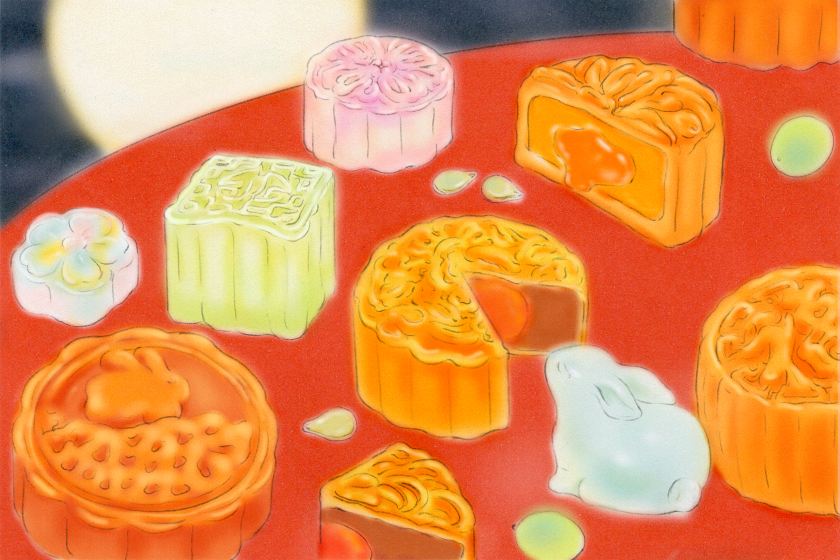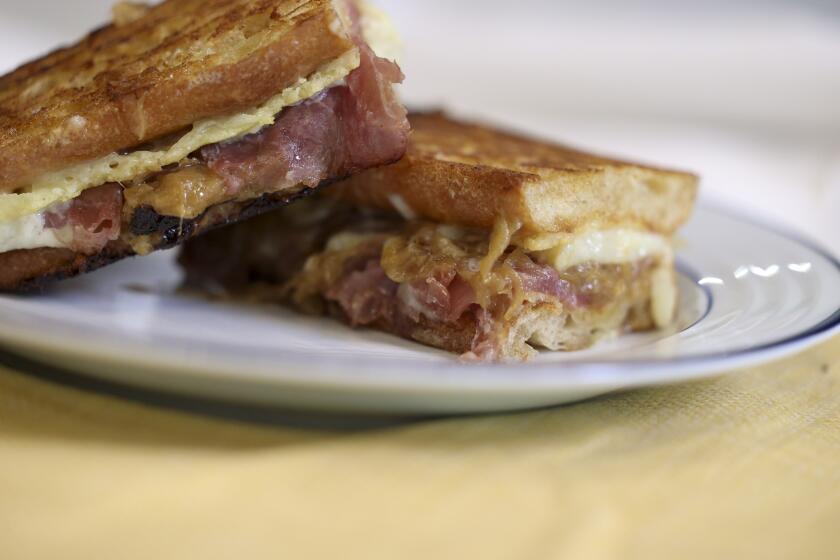New book explores how the orange helped create California, with vintage images
It’s hard to imagine a region more inextricably tied to a product than Southern California is to oranges. Detroit and cars maybe? We even have an Orange County (yes, so does New Jersey, but theirs is named after some danged royal).
David Boulé’s fascinating new book “The Orange and the Dream of California,” published by local heroes Angel City Press of Santa Monica, explores this tightly intertwined relationship. It’s a terrific book, half history and half ephemera collection, that practically floats by with frequent moments of “holy cow!” from even a dedicated produce geek. [UPDATED: The story originally said Angel City Press was located in Pasadena.]
You could say that just as the orange is the most noted product of Southern California, so is Southern California the most noted product of the orange. The fruit – the famed “golden apple” – shines like a sun in so much early advertising for the area. It’s almost as if it encapsulates the idea of California sunshine itself.
Though the fruit had been grown here since the time of the missions, orange culture really took off in the 1870s with the introduction of the Washington navel, a “sport” variety (a spontaneous mutation) that had been discovered in Brazil and was introduced to this area by one Eliza Tibbets – a thrice-married spiritualist who had marched with Frederick Douglass and had set up an integrated commune in post-Civil War Virginia.
She and her husband had moved to Riverside – at that time a favorite location for wealthy emigres, many of whom dabbled in the citrus trees that grew so well in the area. Through a friend, Tibbets acquired some seedling Washington trees and planted them. They did so well that she quickly started selling cuttings of the trees to other farmers. At one point, Boulé recounts, the Tibbetses made as much as $20,000 a year from these cuttings – a fortune in those days. But their fortunes turned with a real estate crash and they ended up losing everything.
See what I mean by a “holy cow!” moment? “The Orange” is full of these, and even more full of a wonderful selection of advertising materials, historical photographs, postcards and other ephemera, all illustrating the magical pull the fruit exerted over a willing people.
ALSO:
Argentine-inspired Cordoba opening soon
Goin, Silverton lead James Beard finalists
How to tell whether your milk has really gone bad
More to Read
Eat your way across L.A.
Get our weekly Tasting Notes newsletter for reviews, news and more.
You may occasionally receive promotional content from the Los Angeles Times.











